The small cattle town of Newton, Kansas was home to several professional portrait photographers in the 1800s. Here are some of them.
Newton, Kansas, which is 26 miles north of Wichita, was a stop on the old Chisholm Trail and would have been a destination of the Texas cattle drives — the place where cattle would have been loaded onto railroad cars. It was a dangerous and rowdy town in the 1870s, home of one of the most deadly gunfights in the old west resulting in the deaths of 8 men. One of Wyatt Earp’s brothers, James Earp lived in Newton for a while.
A number of professional photographers made cabinet card portraits of the residents of Newton in the 1880s and 1890s. Below are the backgrounds of some of them, along with sample work.
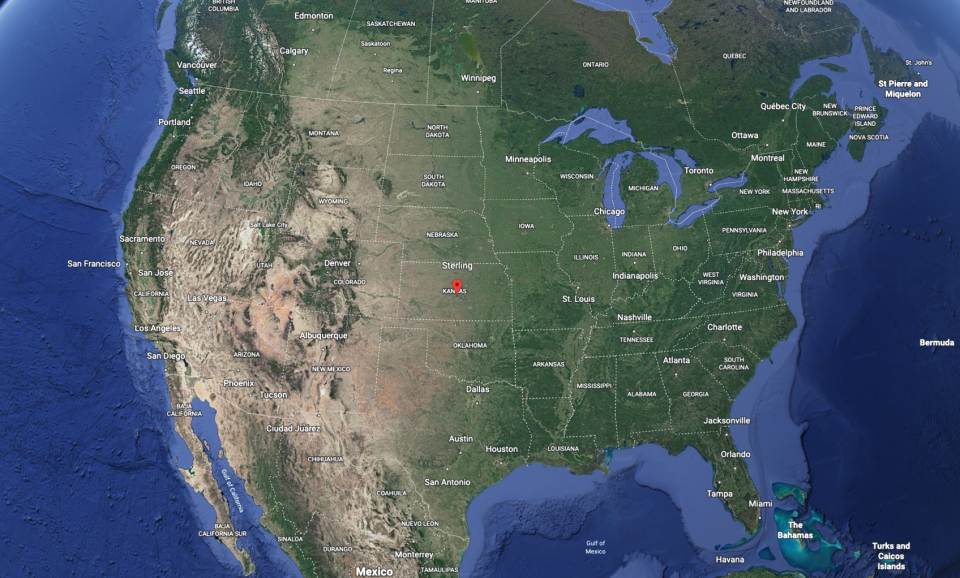
About Cabinet Cards
Cabinet cards were made from the 1860s through the 1890s and well into the 20th century, however, they were most popular in the 1880s and 1890s. Through the 1880s, they were mostly made of albumen prints mounted onto rigid cards which usually featured the photographer’s imprint on the front and back of the mount. Later, they featured other types of photographic prints that looked more neutral black and white, rather than the typical reddish-brown color of albumen prints. The later prints may have included matte collodion, gelatin, or gelatin bromide paper (Wikipedia).
Two styles of posing
In the following examples, we see two major styles: full-body scenes with painted backdrops, furniture, and an image that runs edge-to-edge, or a head and shoulders portrait that features a heavy white vignette and no background.
William E. Langan
William E. Langan (1855-unknown, before 1920) was born in Missouri. At the age of 32 in 1887, Langan moved his family to Newton, where he established a studio in the Hamill Block on Main Street.
Langan and his wife Emma had four children.
After years of success in Newton, and a long-term feud with rival photographer F.D. Tripp, Langan sold his Newton studio in 1897 and relocated back to Missouri, where he established another studio.
All of these Langan cards are blank on the back.
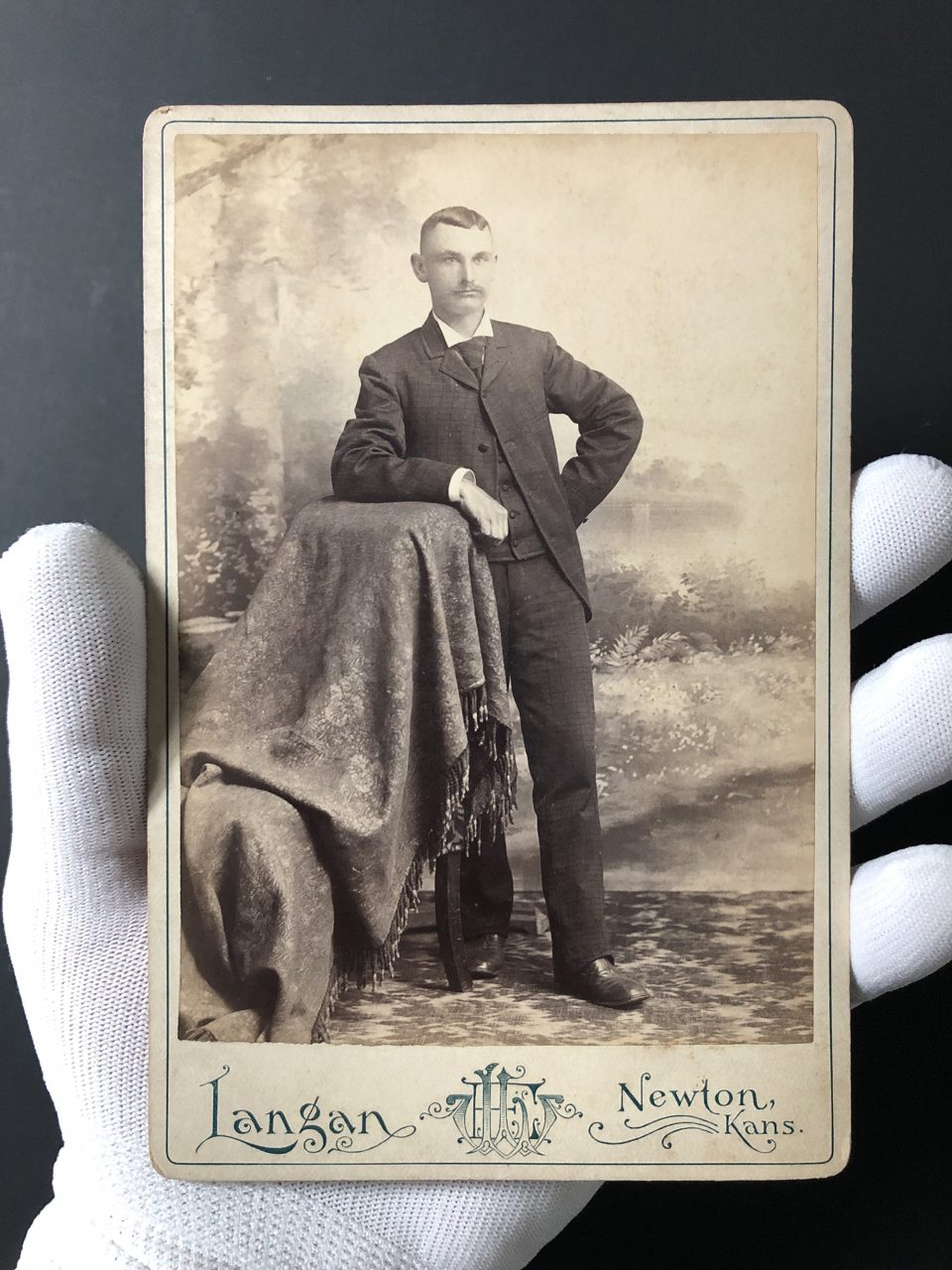
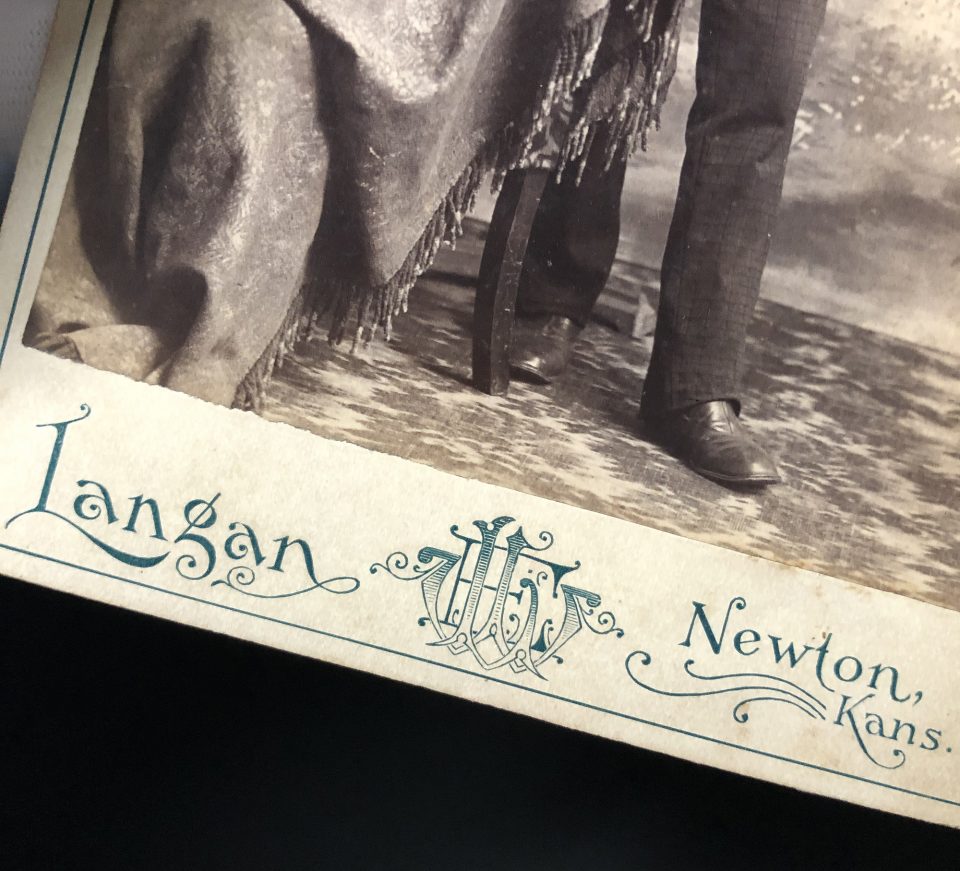
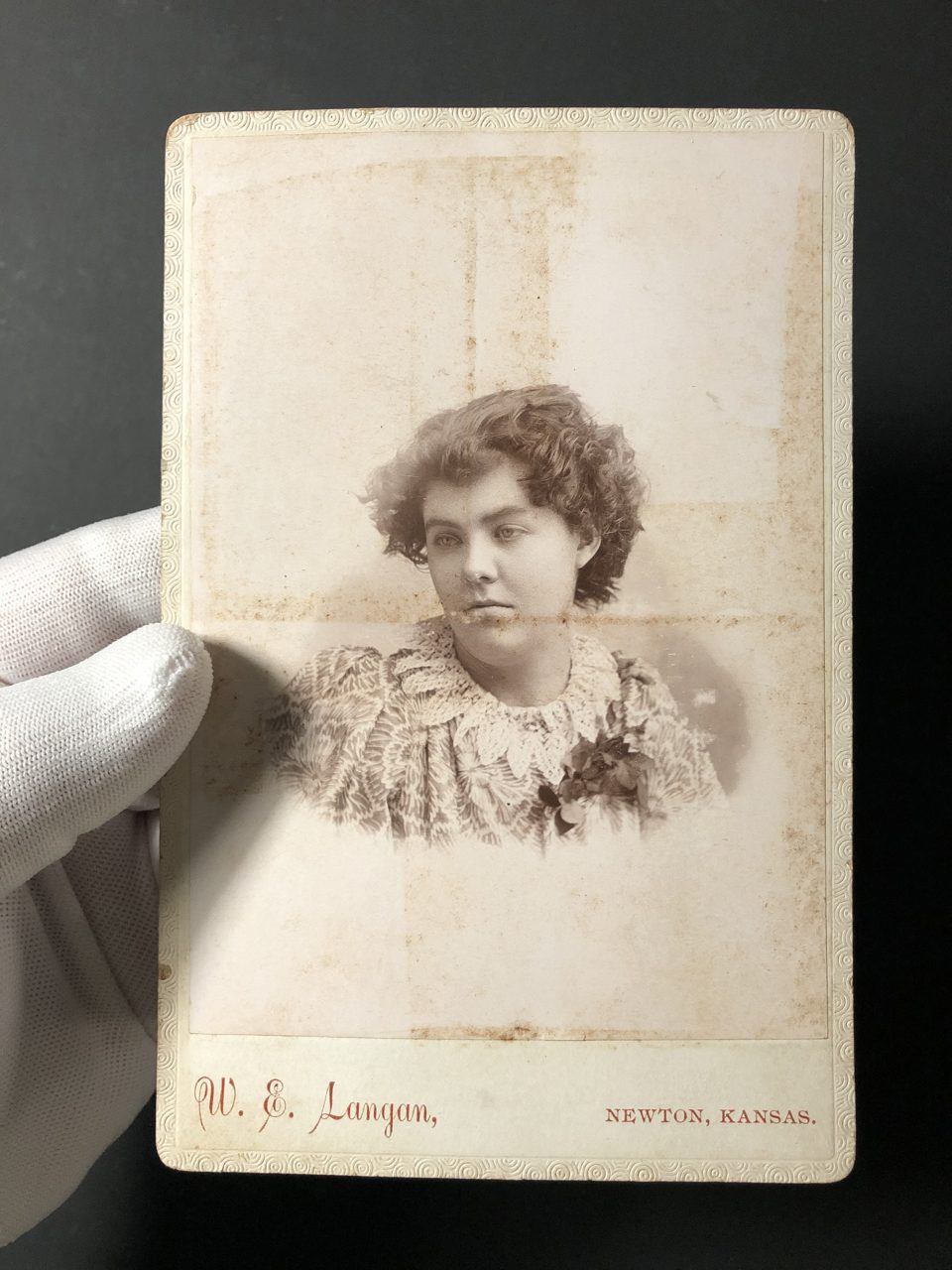
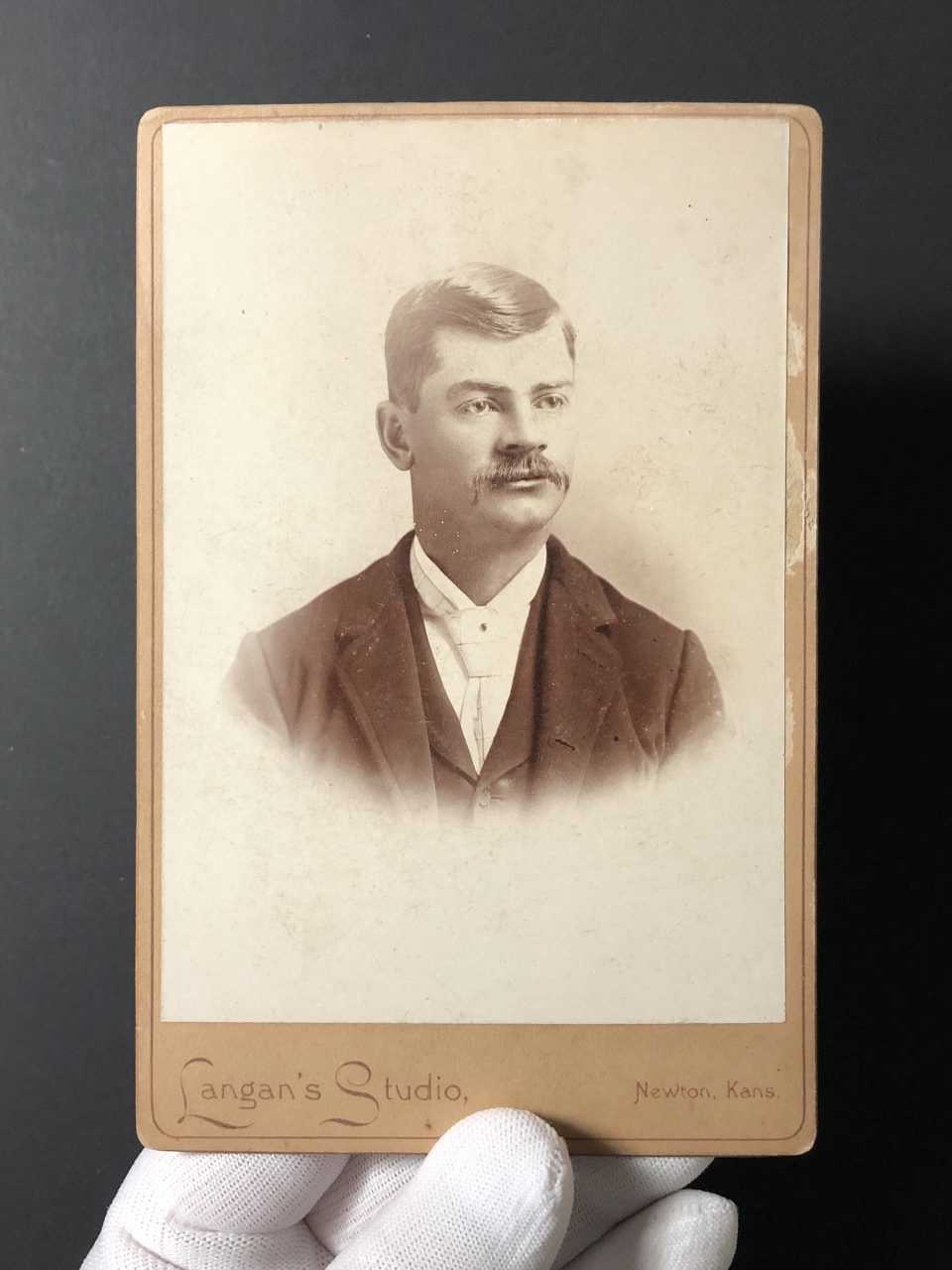
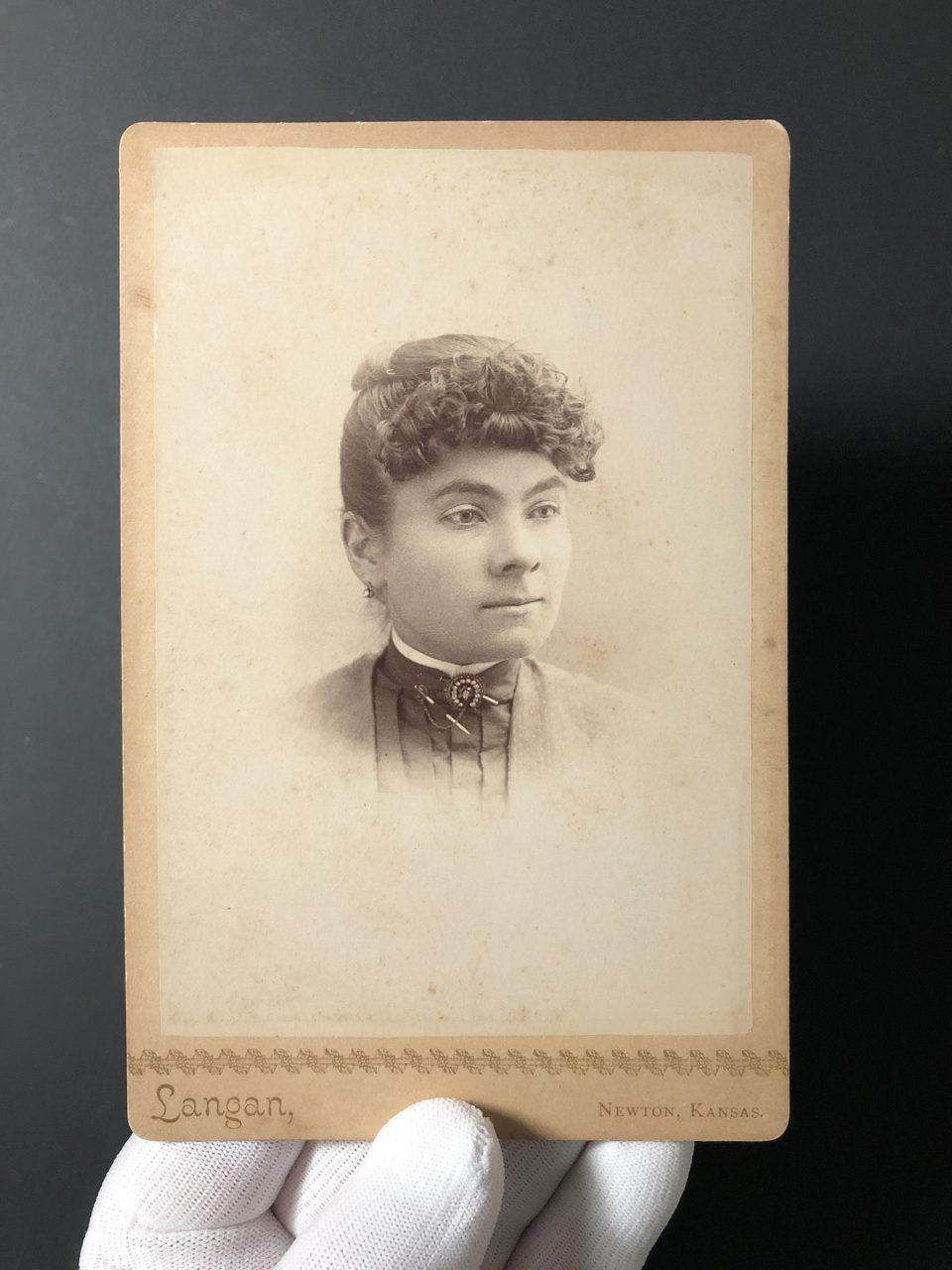
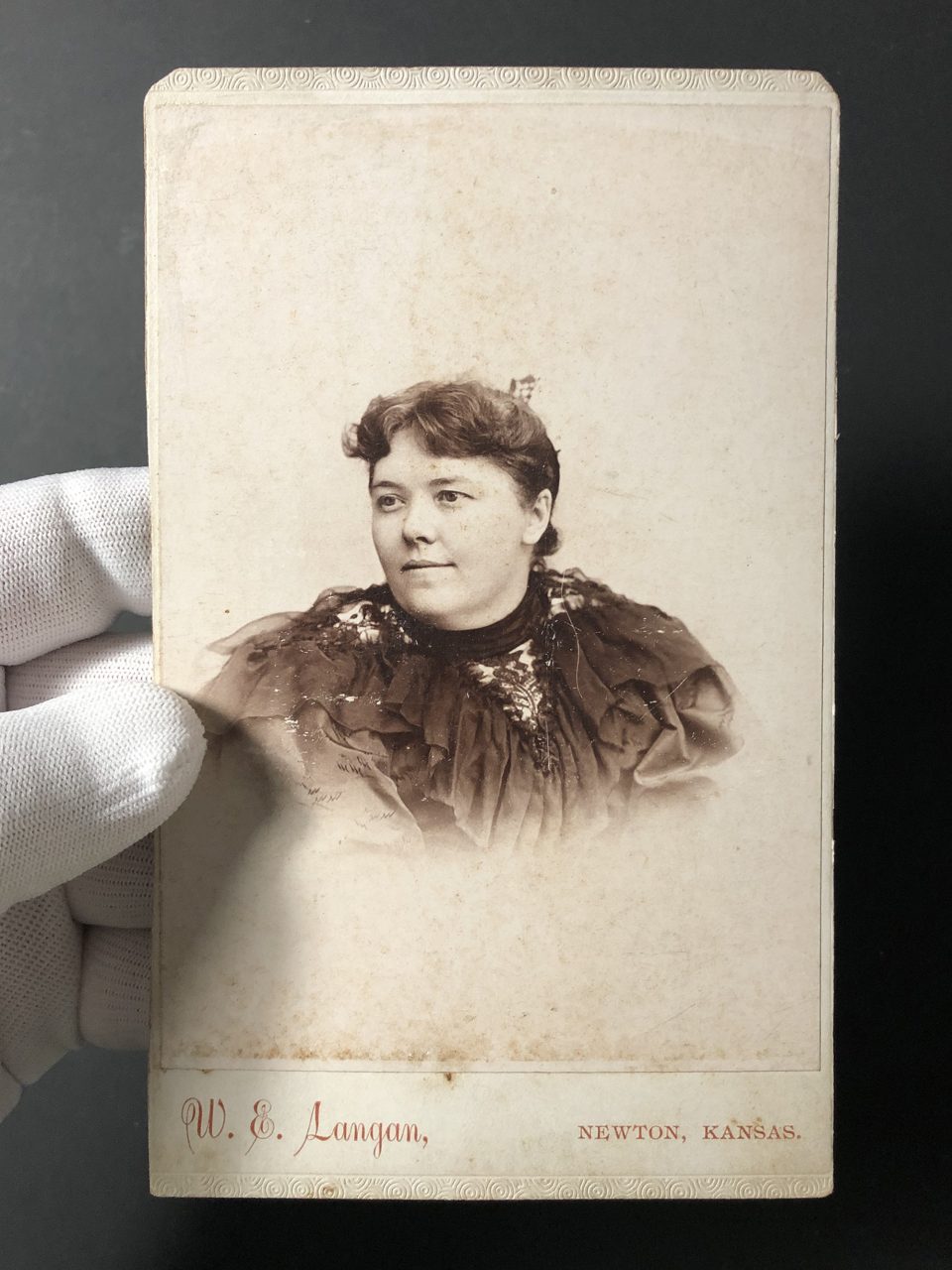
C.C. McDaniel
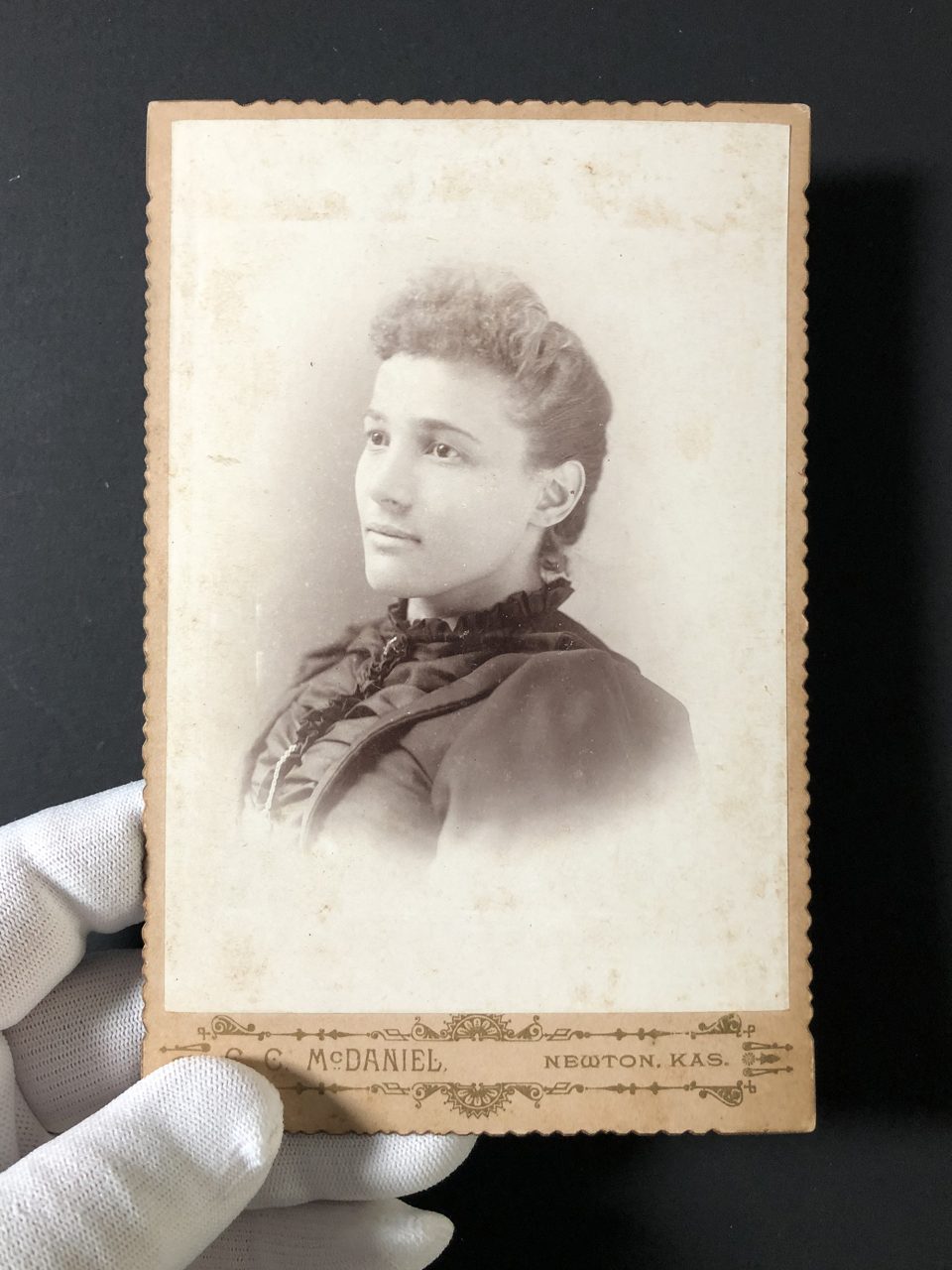
This portrait was made by photographer C.C. McDaniel whose full name was Christopher Columbus McDaniel (1860 – 1920). He operated a photo studio called Newton Art Gallery at 515 1/2 Main Street in Newton, Kansas.
C.C. McDanel was born in 1867 in West Virginia, and moved to Newton, Kansas as a boy with his family. He died young at age 52, in 1920. His cause of death was Bright’s disease, which is an antiquated term for a type of kidney disease.
The beautiful house where he lived and died is still occupied.
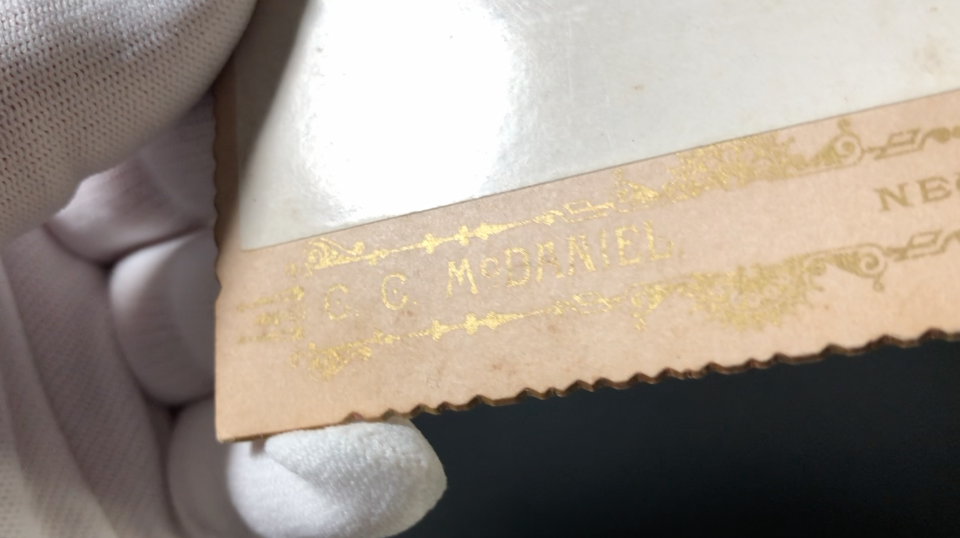
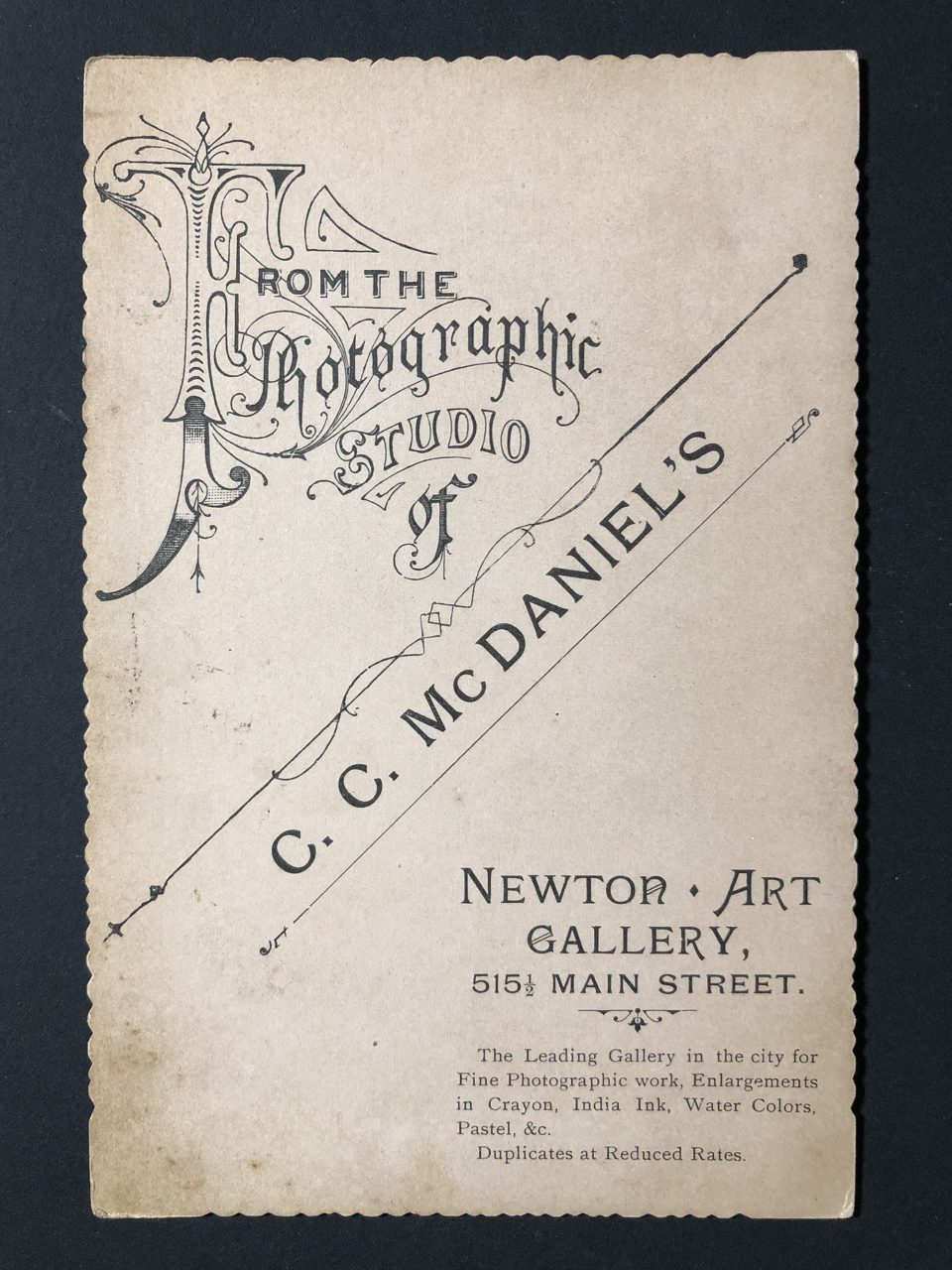
The back of the card says:
“From the photographic studio of C.C. McDaniel’s
Newton Art Gallery,
515 1/2 Main Street.”
“The leading gallery in the city for fine photographic work, enlargements in crayon, India ink, water colors, pastels, etc. Duplicates at reduced prices.”
F. D. Tripp
Frank D. Tripp (1859-1947) was born in New York. By age 21, he was established in Newton as a photographer. He was referred to as the “pioneer photographer of Newton” in the Evening Kansan-Republican when he died in Colorado at age 91. He may have taken the first photograph of Newton.
Tripp worked as a photographer in Newton from 1880 through 1900, when he moved his family to Pueblo, Colorado and continued working as a photographer there. In 1880, Tripp partnered with another young photographer named John Silverthorn. By 1885, his business was headquartered at the corner of Main and Broadway in Newton — the location marked on the photographs featured here. Tripp was the President of the Photographers Association of Kansas in 1896.
Through the late 1880s and into the 1890s, Tripp endured a public and bitter rivalry with another of our photographers, William E. Langan. Accusations and insults were traded in the local newspapers.

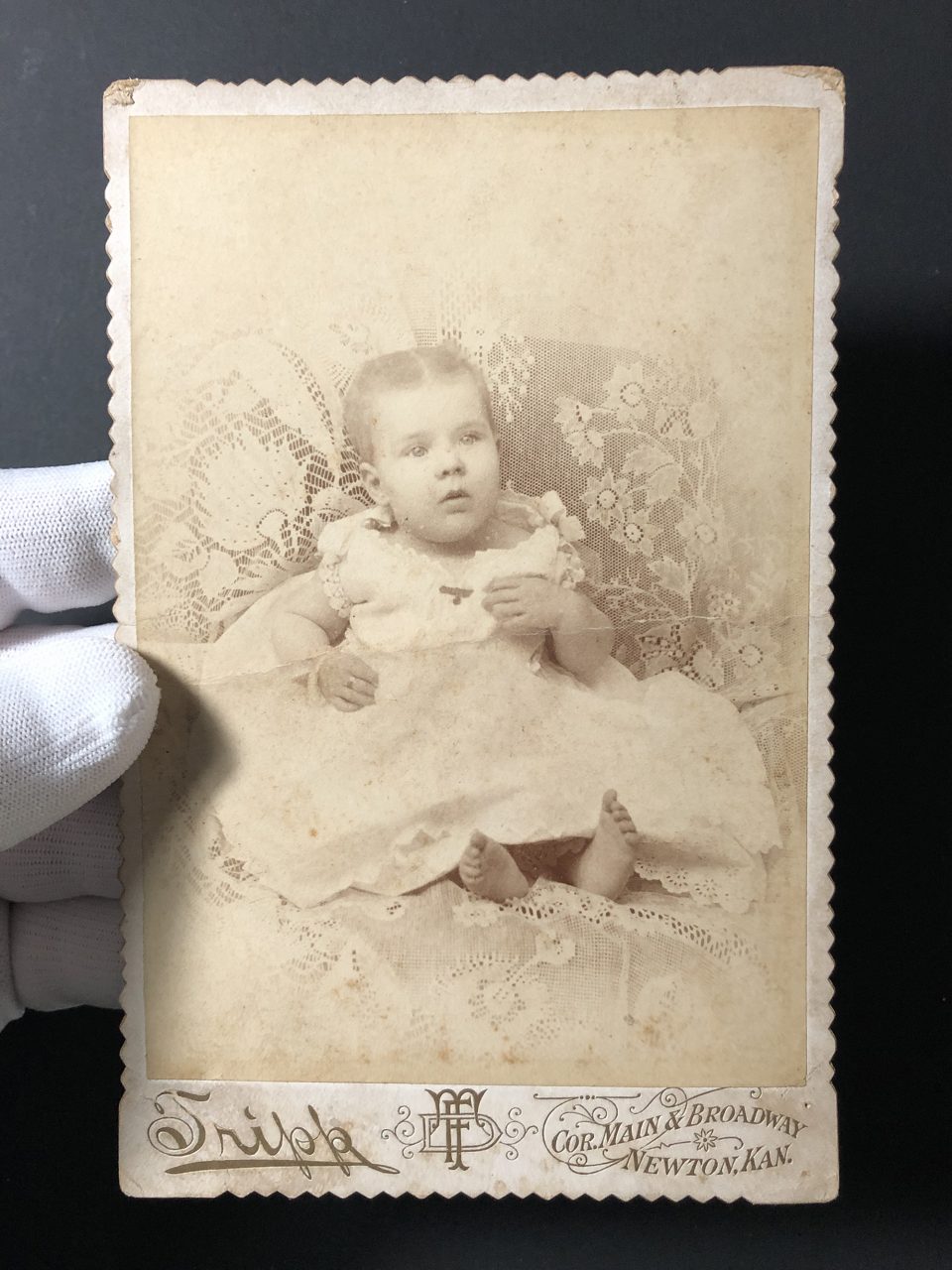
Charles R. Von der Heiden
Charles R. Von der Heiden (1867-1942) was a portrait photographer who lived at 400
East Main Street in Newton in the late 1880s – 1890s, and may have also lived and worked in New Orleans. He was the oldest son of German immigrant H. D. Von der Heiden.
C.R. Von der Heiden was born in Wisconsin in 1867 and died at age 75 in California in 1942.

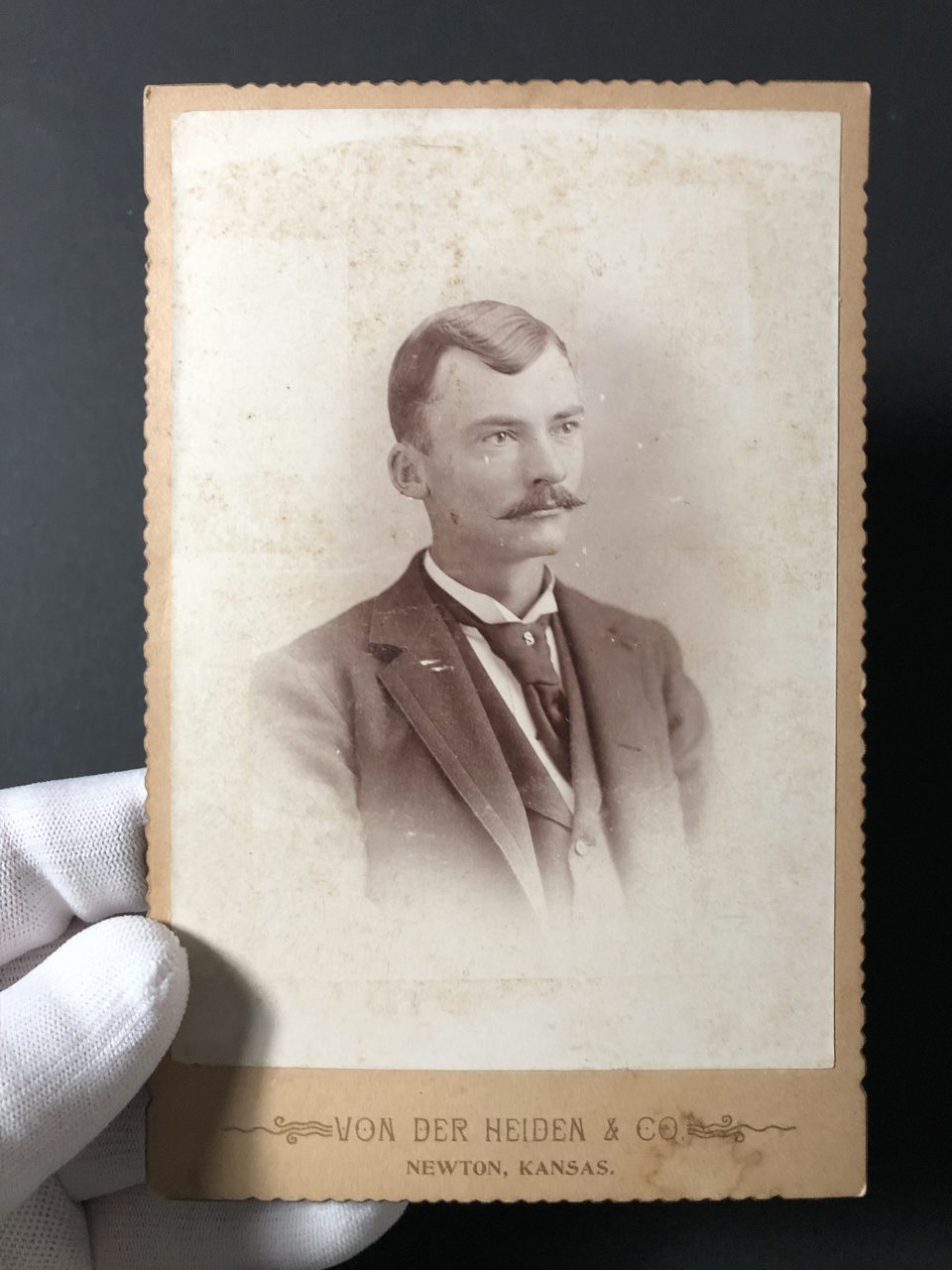
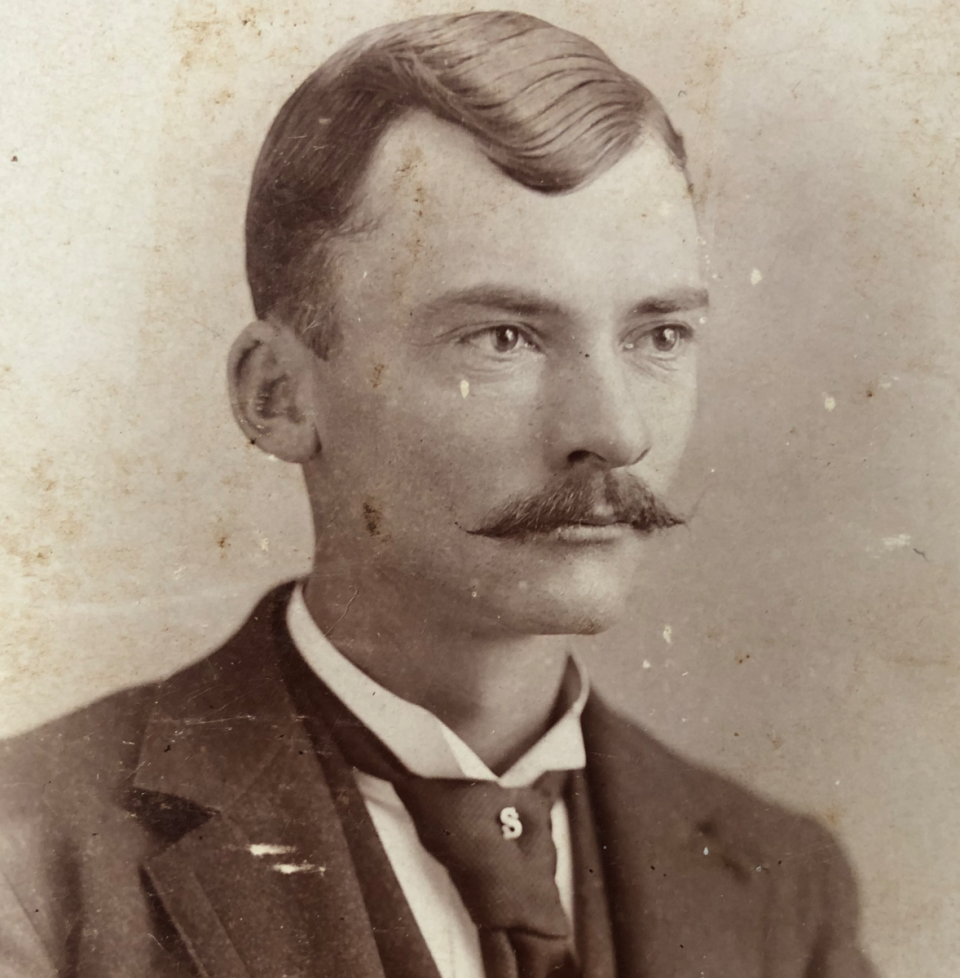
I wonder what this gentleman with the fancy letter “S” tie pin, big mustache, and neatly combed hair did for a living in Newton. Seeing him dressed up for his portrait, I perceive him as a banker, but perhaps he was a farmer or a gambler or a saloon keeper, or perhaps he was in the cattle business.
There’s no way of knowing this man’s identity or how he earned a living, but it’s tempting to speculate and invent backstories.
End of an era
Photography has always been a constant march of new technologies. Since the earliest days, development of better, easier, or more convenient processes has consistently supplanted older ones.
By the early 1900s, cameras from Eastman Kodak made photography an easy and popular hobby for the masses. While cabinet cards were made until the 1930s, their popularity waned with the turn of the century, and gelatin silver snapshots surpassed the old albumen and gelatin bromide cabinet card prints.
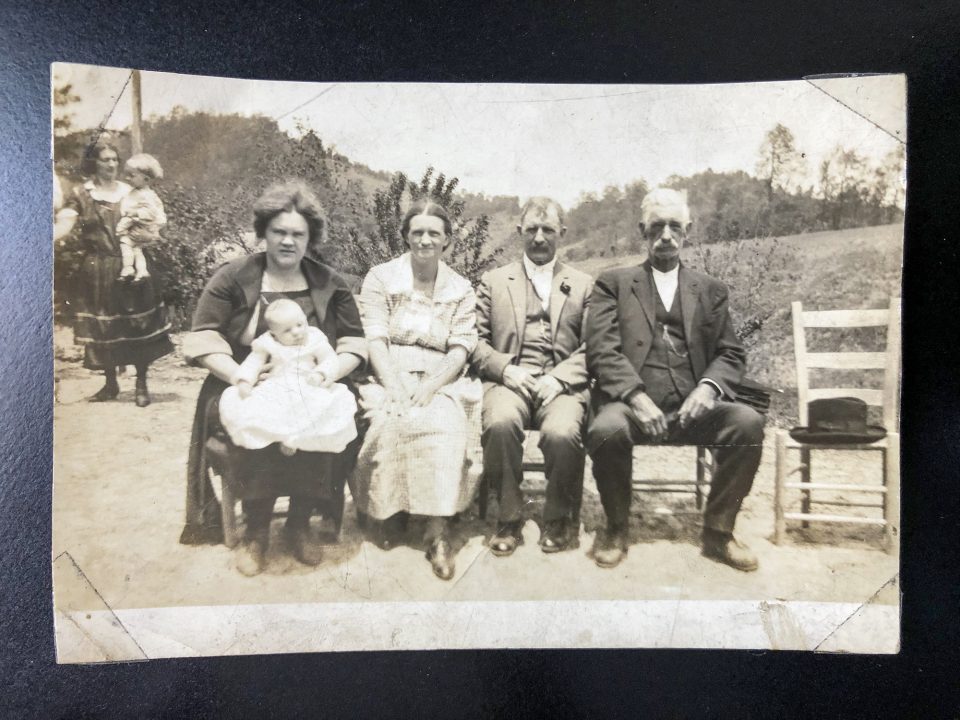
Sources and Links
Harvey County Historical Museum. F. D. Tripp. “‘The Best Pictures:’ W.E. Langan, Photographer”
Find a grave. “Christopher Columbus McDaniel”
Find a grave. “C.R. Von der Heiden.”
ksgenweb.org. “William Henry Von der Heiden”
University of Kansas. Scholar Works. Biographical Dictionary of Kansas Artists (active before 1945). Pg 216.
Voices of Harvey County. “At the Corner of Main and Broadway: Pioneer Photographers, Part 1.” Kristine Schmucker.
Wikipedia. “Cabinet Card.”
Wikipedia. “Newton, Kansas”
